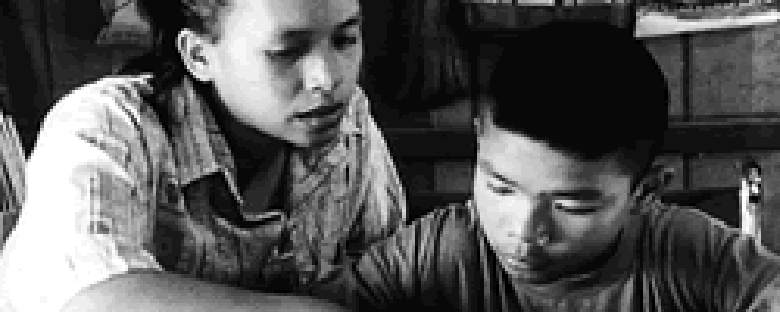Reviews
Dokfa nai meuman
Apichatpong Weerasethakul
Thailand, 2000
Credits
Review by Rumsey Taylor
Posted on 11 July 2004
Source Plexifilm DVD
Related articles
Reviews: Blissfully Yours
Mysterious Object at Noon opens with a lengthy mis-en-scene, supposedly a camera helmed in a moving car. The view is of a Thailand city, beginning with view of modestly active urban horizon and moving, gradually, to a poorer alley. The lane narrows, the pavement becomes looser, and the horizon diminishes to shacks and brush — all in one shot. The opening is a subtle — and interpretive — evocation of director Apichapong Weerasethakul’s dated heritage. It is a dialectic apparent throughout the film that balances the rural country and its depiction in a contemporary medium. Furthermore, the film embodies two narrative forms: its generative fiction and its form as a documentary film.
The film is a concept, a self-generating work that allows its documented subjects to expand and ultimately to conceive it. As its apt opening may prescribe, Mysterious Object is a propelled mechanism without a predictable destination. It is further austere to American audiences, for which Thai film is burdened by little familiarity. In redeeming this criticism, Mysterious Object has, additionally, ethnological merit.
An opening interview involves a woman who relays a depression from her past (as the child of a poor father, she was sold and forgotten). Her words are distinctly real, and instantly, it seems, an off-camera voice asks her for another story. “It can be real or fiction.” Favoring the latter option, the woman supplies the basis of Mysterious Object’s fiction: a crippled boy, bound to a wheelchair, and his teacher, Dogfahr. The remainder of the story is given in piecemeal, in varied interviews in the film’s remainder.
The film is doubly a document and story, and interchanges between each stance generously. To perpetuate his film, Weerasethakul relies upon the denizens of rural Thailand, and documents each location. Each participant will further the story, offering details and filling holes, and the fictional aspect of the film will honor the renewed information.
The participants are of both sexes and a variety of ages. The story will be told in song and sign language. Its delivery is encompassing. As the fiction generates, it will become abstracted, humorous, and nonsensical — the point is not cohesion but generation.
Mysterious Object at Noon, a patient film with lots of talk and no scoring, is fascinating not for its conclusiveness (which it inevitably lacks) but its construction. It is a film made with little domestic influence, austere in its appearance and unique in its form.
We don’t do comments anymore, but you may contact us here or find us on Twitter or Facebook.



